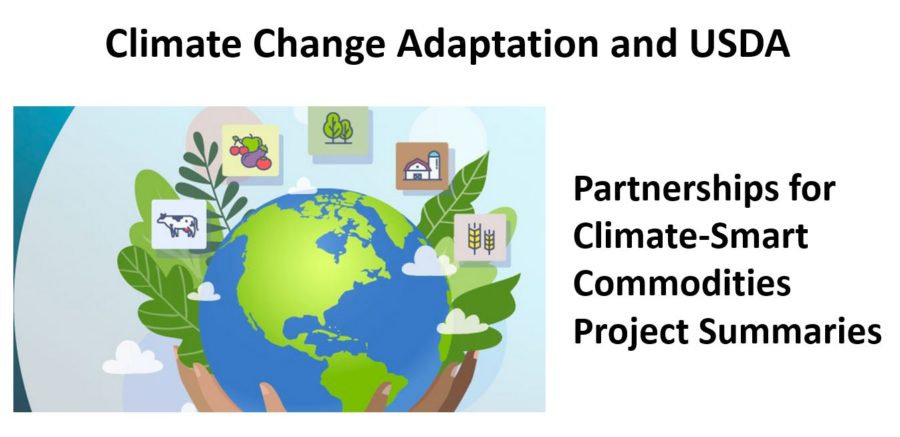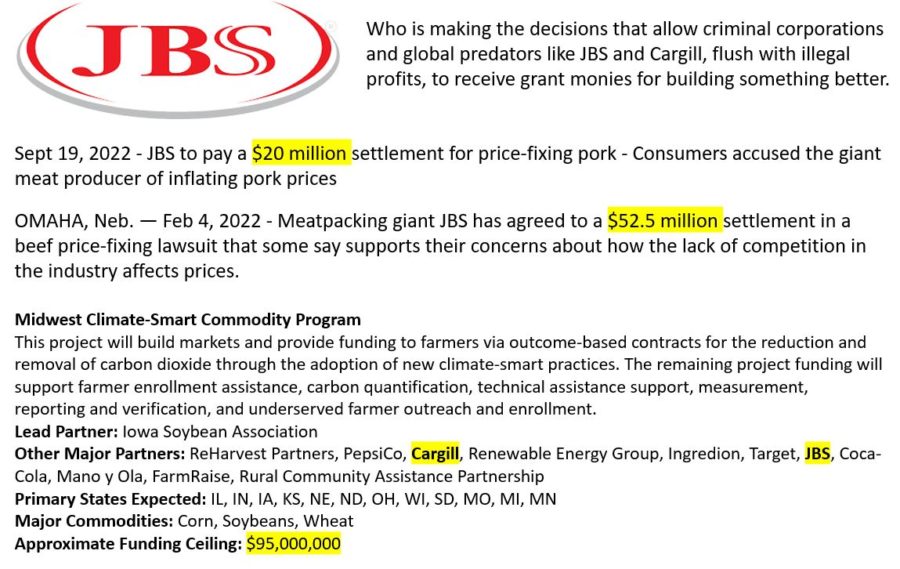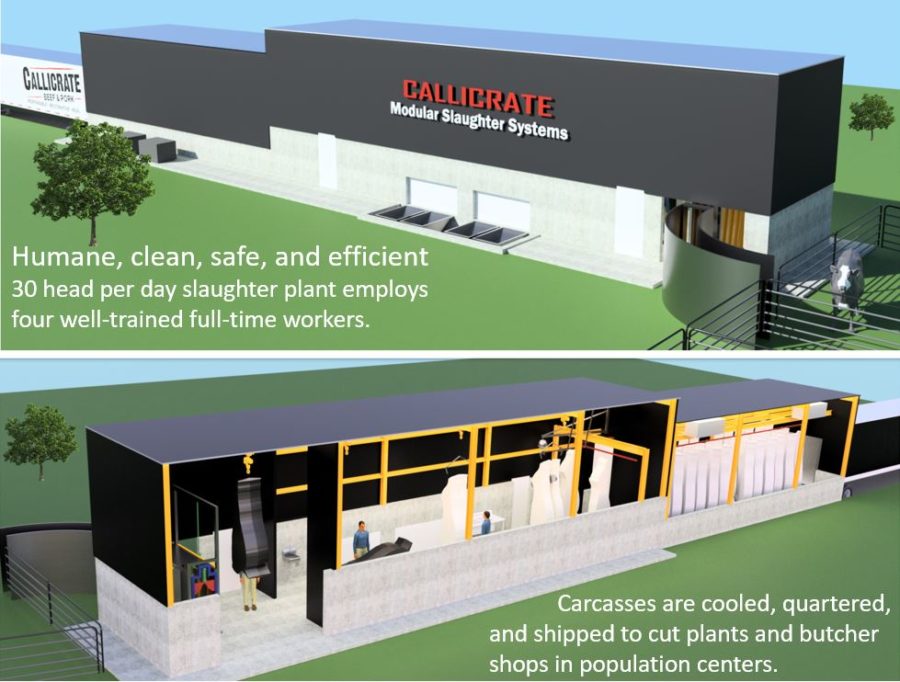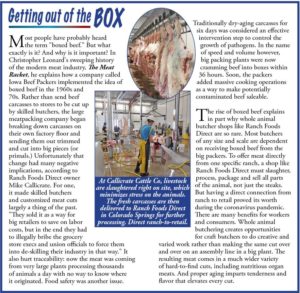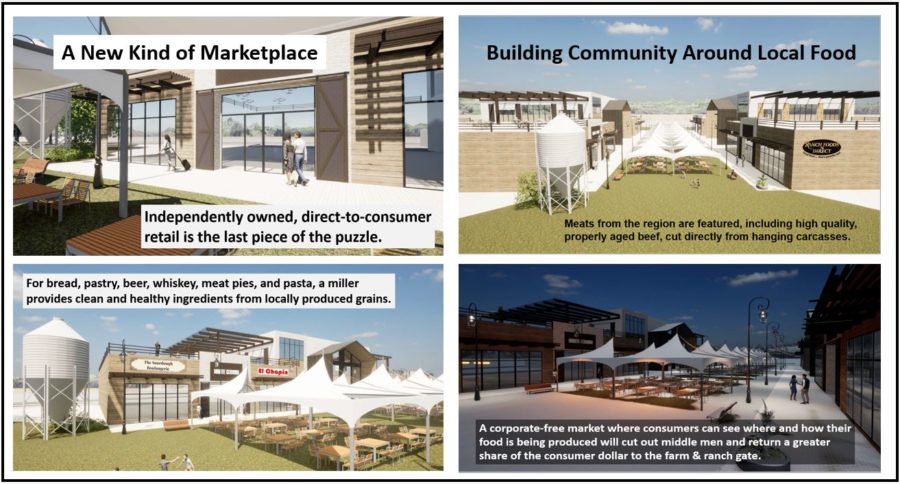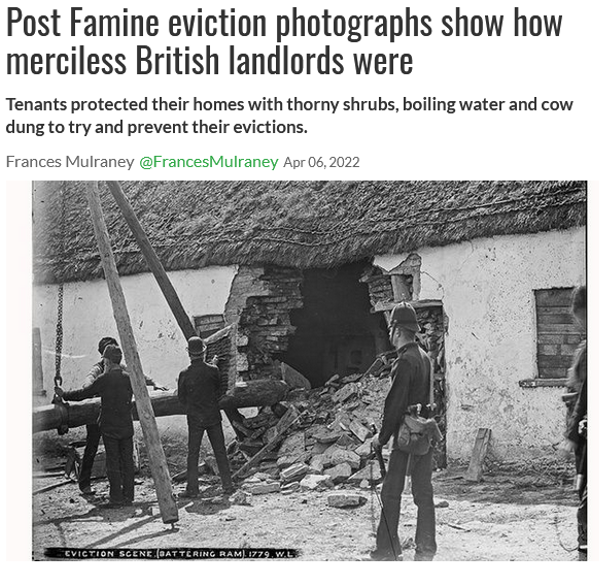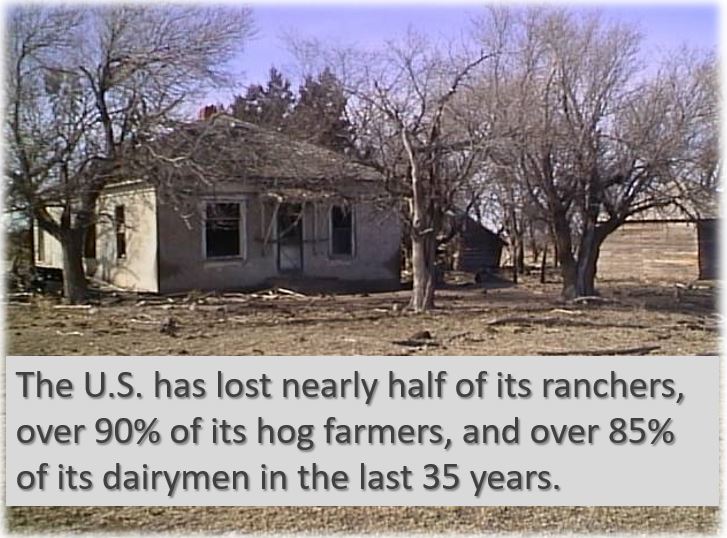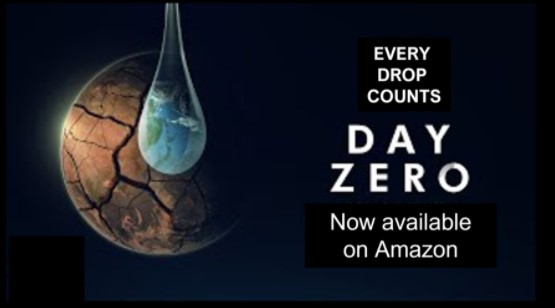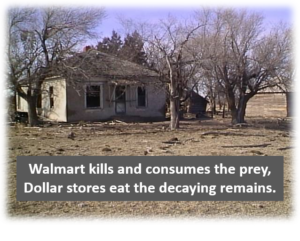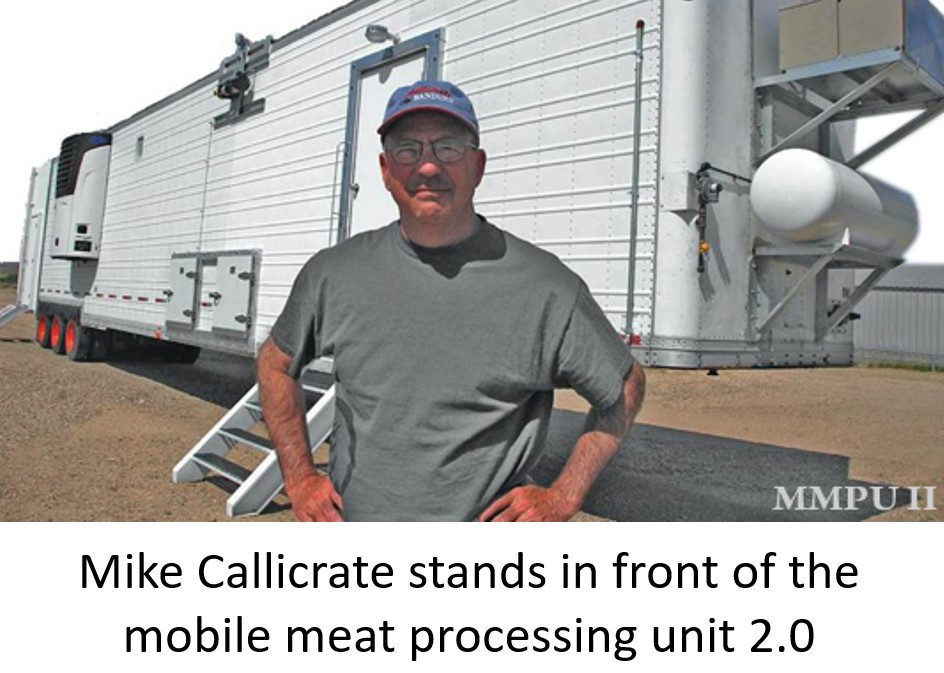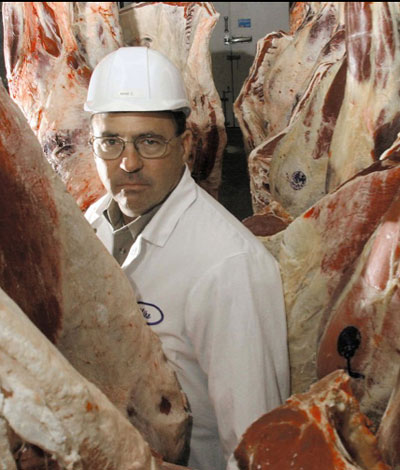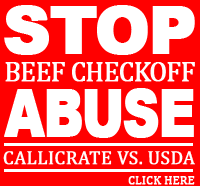Will new meatpacking investment serve people or corporations?
Walmart announced this week that they were buying a minority interest in the proposed North Platte, Nebraska slaughter plant, Sustainable Beef.
The $325 million dollar project with the support of Walmart, and now projected to cost more money, plans to break ground next month, but is this the right direction for the industry and cattle producer investors?
The pandemic taught many painful lessons about the fragility of highly concentrated supply chains, dangers that many of us old enough to remember a more decentralized and competitive marketplace, with many buyers and many sellers, warned against.
Big retailers and food service companies got caught in the price gouging of the big-four meatpackers, losing the fat margins that years of concentrating the retail and food service sectors had given them.
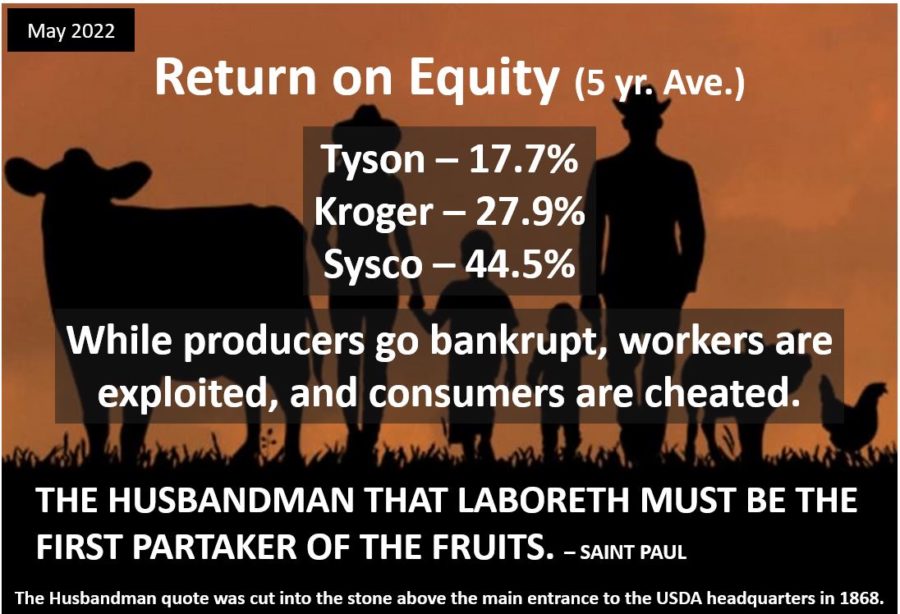
Cattle producers make the investment, Walmart gets the returns.
The current administration laid out a post pandemic plan for rebuilding a more resilient and sustainable meat supply chain, but will the plan have a chance if it doesn’t serve the interests of Big Food?
For the last fifty or so years, the industrial “big is better” mentality ruled. Early warnings came from the highly respected economist, Harold Breimyer as he, “… sketched the possibility that all production and marketing might be integrated up to the retailing level: Carried to a distant and perhaps never-to-be-realized but still logical extreme, present trends could well mean that competitive independence may one day be restricted basically to the retailing segment.” Breimyer, pp 287-288.
Perhaps never-to-be-realized? Well, we have arrived.
Chris Clayton summarized the various meat plant projects, including Sustainable Beef, in his recent article, Walmart and Beef’s Vertical Integration. Of concern to me was the massive amounts of investment by both government and private investors in facilities that depend on a low wholesale price while failing to recapture the lost retail share of the consumer dollar for producers.
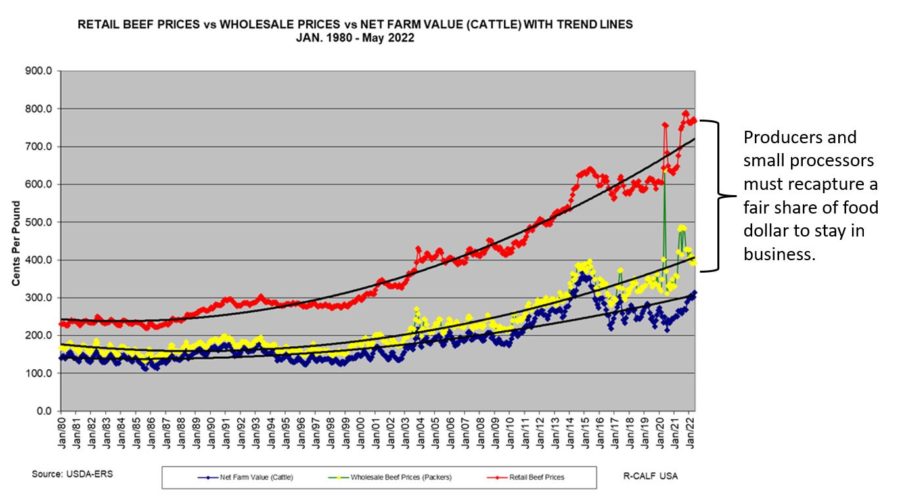
Additionally, the cost per head of daily production is many times higher compared to a more decentralized local/regional infrastructure like Callicrate Cattle Co.

Unlike the large plant projects designed for national distribution, Callicrate Cattle Company is designed to serve the needs of Ranch Foods Direct and local producers. RFD is a small local/regional direct-to-consumer meat company in Colorado Springs, Colorado delivering up to 79% of the consumer beef dollar back to the farm and ranch gate, while selling at big box prices. This is compared to approximately 37 percent producer share through the existing highly concentrated and extractive system, and 65% in 1975, the last time the finished cattle market was competitive.
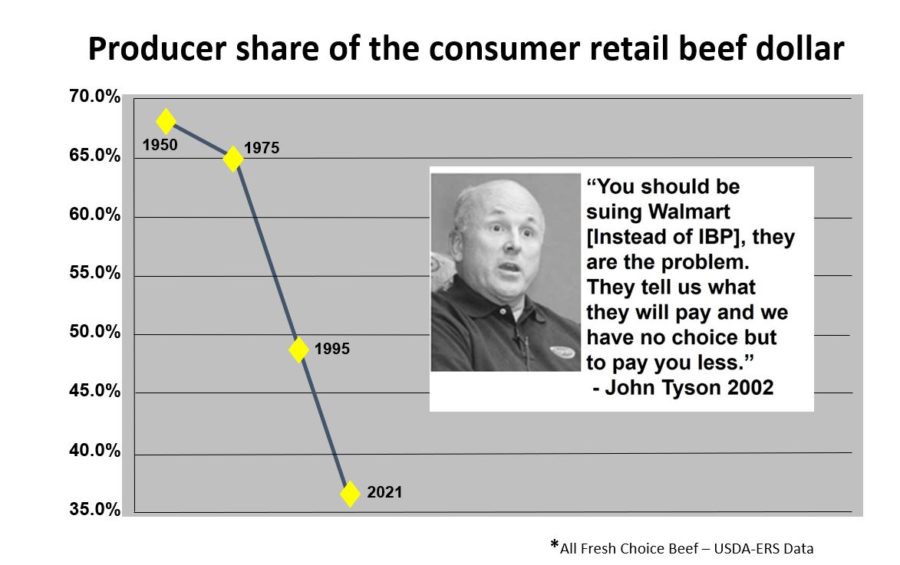
If the industrial model is so low cost and efficient, why does the producer receive so little of the consumer retail dollar?
Consider some of the other differences:
Callicrate processes animals onsite, lowering stress levels and improving meat quality. Shipping to distant slaughterhouses is expensive. A 200 mile trip will cost the producer around $35/hd. with today’s shipping rates.
Callicrate ships carcasses, rather than live animals, essentially eliminating the cost of boxing beef:
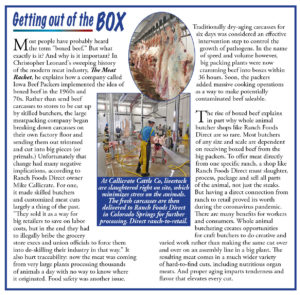
Why box the beef? Instead of putting primal cuts into boxes, hang and age longer and cut directly into higher value retail cuts.
Slaughter waste becomes valuable soil nutrients in the onsite Callicrate composting system.
Workers at the Callicrate facility are higher skilled and more efficient than the unskilled, often refugee, workers at the large plants. In 1980, journeyman level butchers at G&C Packing Co. in Colorado Springs, with a four person crew, could hang up ten head of beef per person per day in a simple low cost cradle system. Today, according to published capacity and employment figures, unskilled workers at Tyson’s Dakota City and Holcomb beef plants average less than 1.6 beef animals per worker per day.
Callicrate Cattle Co., invests in and retains more dollars in the St. Francis, Kansas and Colorado Springs communities.
I think it’s clear that the smaller plant approach better serves producers, consumers, and communities, is more sustainable and resilient, while being far less expensive to build. We should give up the idea that everything must be scalable to suit companies like Walmart.
For more:
Let’s say goodby to Smithfield and Big Food
What Could $300 Million Dollars Do?

